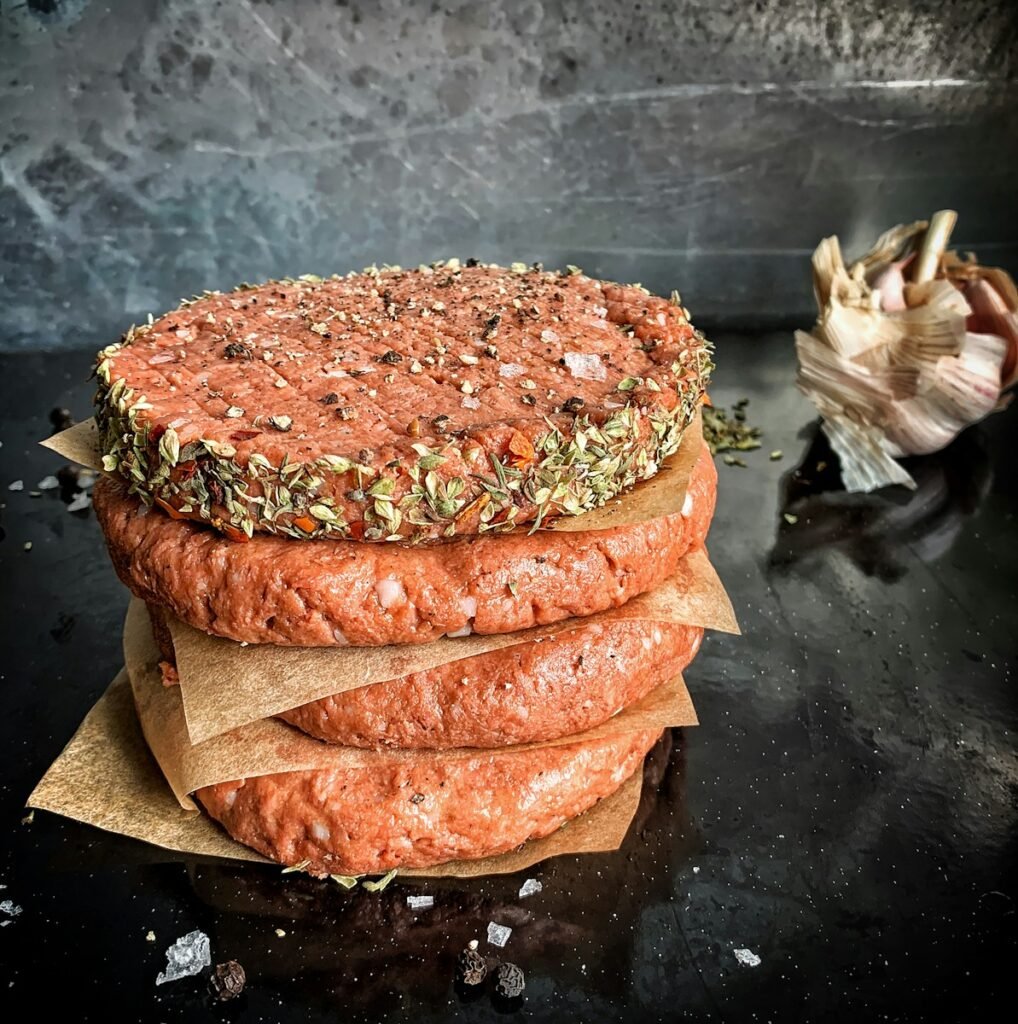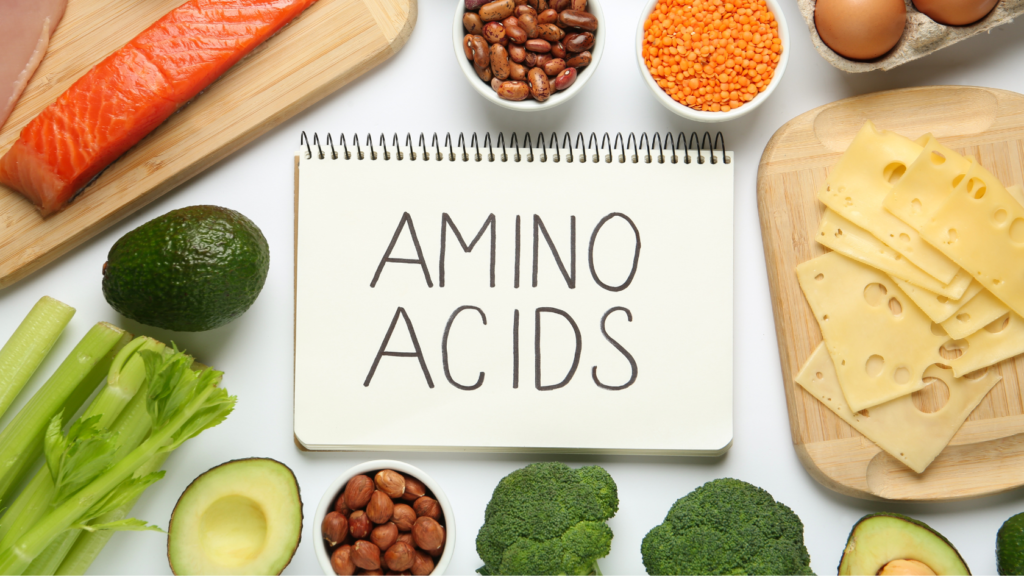What are Vegan Meat Alternatives?

You might wonder: If Vegans are trying to replicate meat, why don’t they just consume meat?
Vegan meat alternatives replicate some combination of the properties (texture, taste, appearance, or nutritional value) of meat. The choice to consume these however, is not always because the consumer did not like meat, but rather reduced or stopped consuming it due to ethical, environmental, perception of protein, and health reasoning and cost [1].
Are you thinking about cutting back on your meat consumption? Well you’re not alone. The options of vegan meat alternatives have been growing along with their popularity, not just for vegans and vegetarians but also for those choosing to follow a more plant-based or plant-forward diet [2]
Chosen by a registered dietitian, the 11 top meat alternatives based on their affordability, comparable texture or taste to meat, or substantial amounts of plant-based protein.
11 Top Alternative Foods for Meat

1. TVP or Textured vegetable Protein
TVP, made from defatted soy, can be found dried, pre-seasoned, or in a sauce. Rehydrate it, and it will carry a similar texture to that of ground meats. So, using TVP can be a great way to replace or stretch a portion of ground meat, just don’t forget to season appropriately if you’re trying to mimic flavors of meat.
For more on cooking TVP and recipes to use it in, check out How to Cook Textured Vegetable Protein
Protein: 52 grams per 100 grams dried TVP [3].
2. Tempeh
Tempeh, like TVP, is also made from soy and typically comes in the form of a compressed block. However, pre-cooked, flavored, and seasoned Tempeh is growing in popularity.
If not already, it does have to be cooked but can be marinated and sliced for sandwiches, stir-fried, or crisped up to put on a salad or grain bowl.
Protein: 20 grams per 100 grams or 34 grams per cup of Tempeh [3].
3. Seitan
Made from wheat protein, seitan comes in all different forms.
Often sliced for a vegan deli meat or shredded to act as a pulled or shredded meat.
Protein: 18 grams per 100 grams or 36 grams per cup of Seitan [3].
4. Tofu
Tofu is a common plant-based protein option, though it’s often criticized for lacking flavor. As a soy-based product, tofu greatly benefits from marinades, seasonings, or sauces. For better flavor absorption, try slicing or cubing it before marinating.
There are several tofu textures available, each suited for different culinary uses. As the tofu becomes firmer, ranging from silken to extra firm to super firm, more water is pressed out, concentrating the protein and giving it a denser texture. These firmer varieties are ideal for stir-fries, grilling, or scrambling. In contrast, silken tofu has a much softer consistency and is best used in blended dishes or added gently to soups at the end of cooking to avoid breaking it apart.
Silken tofu is also great for blending into sauces, soups, or smoothies to boost protein content and add creaminess. This makes it a versatile ingredient, not just a meat substitute, but a useful addition to both savory and sweet recipes.
Check out how to use silken tofu in a Plant-Based Chipotle Sauce and smoothies using my Plant-based Smoothie Recipe Guide.
Protein: 15 grams per 100 grams of super firm tofu [2].
5. Beans
Black beans, kidney beans, white beans, butter beans, navy beans, chickpeas (garbanzo beans), pinto beans… the list goes on.
Most beans offer protein with the exception of green and wax beans.
Soups, stews, dips, and sides are commonly where beans are used, but if you have not already, try crisping them up for a new layer of potential uses.
Protein: 7 grams per 100 grams or 15 grams per cup of black beans [3].
6. Edamame
Shuck whole soybeans, and you’ll find edamame. Use them in the same ways as beans noted above but also in stir-fry, bowls, crisped for a snack or topping.
Protein: 12 grams per 100 grams or 18 grams per cup of Edamame [3].
7. Lentils
Brown, red, black, or green lentils, just like different beans, are similar in nutritional value but offer slightly different textures and tastes between them.
Using them you can make lentil puri (High protein flatbread), soups, creamy curries, cold or hot salads, crisps, and sauces.
Check out our Lentil and Potato Curry (Plant-Based) recipe, for an flavorful introduction to eating lentils.
Protein: 9 grams per 100 grams or 18 grams per cup of cooked red lentil [3].
8. Quinoa
Quinoa is a versatile high protein and high fiber grain. Use it as a base to grain bowl, mix with other grains, or use a component of a homemade vegan meat patty or meatball.
Protein: 4 grams per 100 grams or 8 grams per cup of cooked quinoa [3].
9. Peas

Peas, although not crazy high in protein, can be one component of a meal to help you meet your protein needs.
Blended into a sauce like a pesto to add as topping to a dish, or more traditionally use as a side.
Protein: 5 grams per 100 grams or 8 grams per 1 cup of peas [3].
10. Mushrooms
Mushrooms, although don’t offer a significant amount of protein, their savory flavor and different varieties are a great vegan alternative to meat.
Protein: 3 grams per 100 grams or 4 grams per cup of cooked portobello [3].
11. Meat replacement products
Often using a combination of the above protein sources vegan meat replacement products often strive to get the closest to meat in taste and texture.
Protein: Greatly varies depending on product.
Vegan Meat Alternatives vs Animal Meat
Considerations When Choosing Plant-Base Protein
Many of the 11 vegan meat alternatives suggested are used due to their substantial amount of plant-based protein.
However, the quantity and quality is not always equal when choosing vegan meat alternatives.
Animal protein is naturally often more protein dense than plant sources of protein meaning, you will likely need to include more plant-based sources of protein to meet equivalent amounts to the animal counterpart.

Additionally, protein is made up of chains of compounds called amino acids. What you need to know about amino acids is that there are essential amino acids that the body needs to obtain from consumption of protein foods containing them.
Proteins containing all essential amino acids from one source are called a complete source of protein [1].
Now animal proteins are complete sources of protein however, some, but not all plant-based proteins are complete proteins.
Since some plant-based proteins don’t contain all the essential amino acids, they need other plant-based foods to make up for the missing essential amino acids.
We call these complementary protein sources and one of the most common examples of this is beans and rice.
To help ensure we are consuming enough complementary proteins to get the adequate essential amino acids, it is important to one, consume enough protein and two, consume protein from a variety of sources [1].
Nutrition Benefits of Plant-Based Protein
Aside from just protein, plant-based protein sources also often come with fiber [2]. Fiber is something that many Americans could benefit from consuming more of, with greater than 90 percent of women and 97 percent of men are not meeting recommended fiber guidelines [4].
Environment
Vegan meat alternatives have the potential to have a lower environmental impact in comparison to animal based protein. However, when considering the processing that goes into meat replacement this does create a higher demand for energy increasing their environmental impact [2].
Cost
Depending on the source, plant sources of protein can be more affordable than animal sources of protein. However, just like the environmental impact the cost often increases with additional processing to make a product look and taste like meat .
The first 10 of the 11 vegan meat alternatives were chosen as they can be affordable alternatives. Meat replacement products just like their protein content can vary greatly depending on the product.
3 Tips to Using Vegan Meat Alternatives
Undoubtedly, one does not have to go vegan or vegetarian to consume more of their protein from alternative food sources to meat. Here are 3 tips to get into the pattern of using more plant sources of protein.
- Add it alongside animal sources of protein.
- Cut an animal based protein portion with vegan meat alternatives.
- Alternate days or meals consuming plant and animal sources of protein.
The Take Away
Plant-based proteins are becoming more popular to use for vegan and plant-forward eaters alike [2]. Along with this, there are growing amounts of plant-based products in addition to those that have been around for a long time. Although plant-based protein products can mimic meat closer, they often come with a price tag and can have a higher environmental impact than less processed vegan meat alternative counterparts [2].
Top 11 vegan meat alternatives were chosen based on their affordability, comparable texture to meat, or substantial amounts of plant-based protein. These include textured vegetable protein (TVP), tempeh, seitan, tofu, beans, edamame, lentils, quinoa, peas, mushroom, and meat replacement products.
Don’t limit vegan meat alternatives to the traditional uses for meat. Get creative in the kitchen to get protein in in new ways and with different components of a dish.
When getting most of your protein from plant-based sources it is important to consume adequate amounts and a variety of protein sources to help ensure you get adequate amounts of essential amino acids [1].
References
- Hertzler SR, Lieblein-Boff JC, Weiler M, Allgeier C. Plant Proteins: Assessing Their Nutritional Quality and Effects on Health and Physical Function. Nutrients. 2020; 12(12):3704. https://doi.org/10.3390/nu12123704
- Andreani G, Sogari G, Marti A, Froldi F, Dagevos H, Martini D. Plant-Based Meat Alternatives: Technological, Nutritional, Environmental, Market, and Social Challenges and Opportunities. Nutrients. 2023;15(2):452. Published 2023 Jan 15. doi:10.3390/nu15020452
- U.S. Department of Agriculture, Agricultural Research Service, Beltsville Human Nutrition Research Center. FoodData Central. [Internet]. [cited 2024 Oct 1]. Available from https://fdc.nal.usda.gov/.
- USDA. Dietary Guidelines for Americans 2020 -2025 . USDA, Dec. 2020.

Pingback: High Fiber Foods - Fig Lane Nutrition
Pingback: 3 High Protein Plant Based Yogurt Alternatives [Dietitian Tested] - Fig Lane Nutrition
Pingback: Difference Between Vegan and Plant-Based - Fig Lane Nutrition
Pingback: Top 9 Plant Based Calcium Sources - Fig Lane Nutrition
Pingback: 11 Plant-Based Fat Sources - Fig Lane Nutrition
Pingback: How to Cook Textured Vegetable Protein - Fig Lane Nutrition
Pingback: Plant-Based Chipotle Sauce - Fig Lane Nutrition
Pingback: Lentil and Potato Curry (Plant-Based) - Fig Lane Nutrition
Pingback: Crispy Rice Salad with Chili Crisp Dressing - Fig Lane Nutrition
Pingback: How To Stay Full on a Plant-Based Diet [Dietitian's Guide] - Fig Lane Nutrition
Pingback: Wheat Protein Content Per 100g: A Comparison of Common Flours - Fig Lane Nutrition